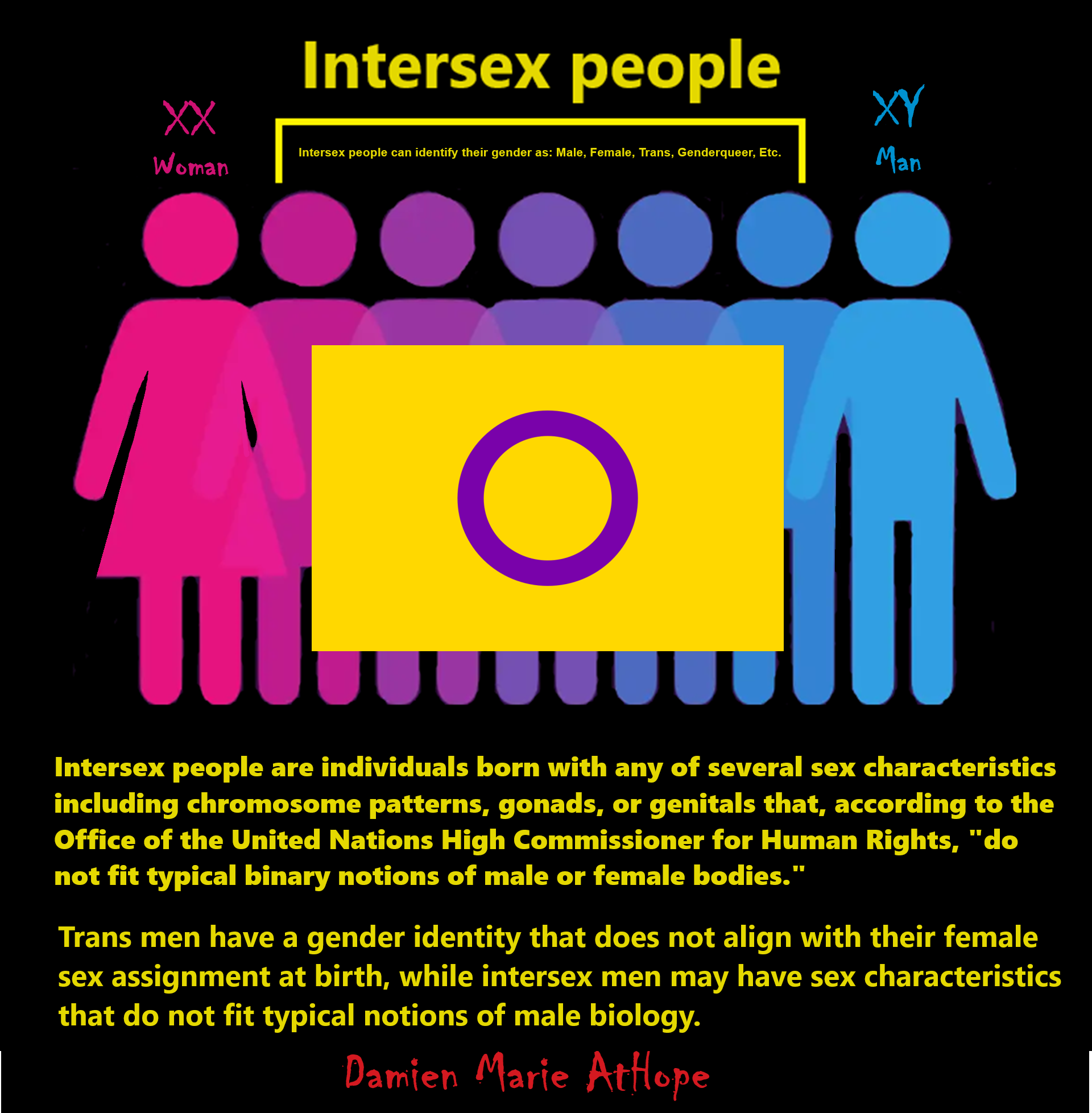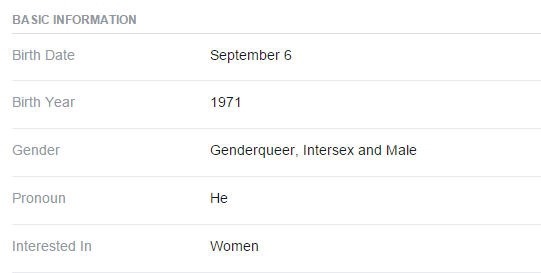Intersex people can identify their Gender as: Male, Female, Trans, third gender, Genderqueer, Non-binary, Etc.
“Being non-binary is also not the same as being intersex; most intersex people identify as either male or female.” ref
Intersex people can identify their Sexual orientation as: heterosexuality, homosexuality, bisexuality, pansexual or polysexual, asexuality, Etc.
“Androphilia describes sexual attraction to masculinity; gynephilia describes the sexual attraction to femininity.” ref
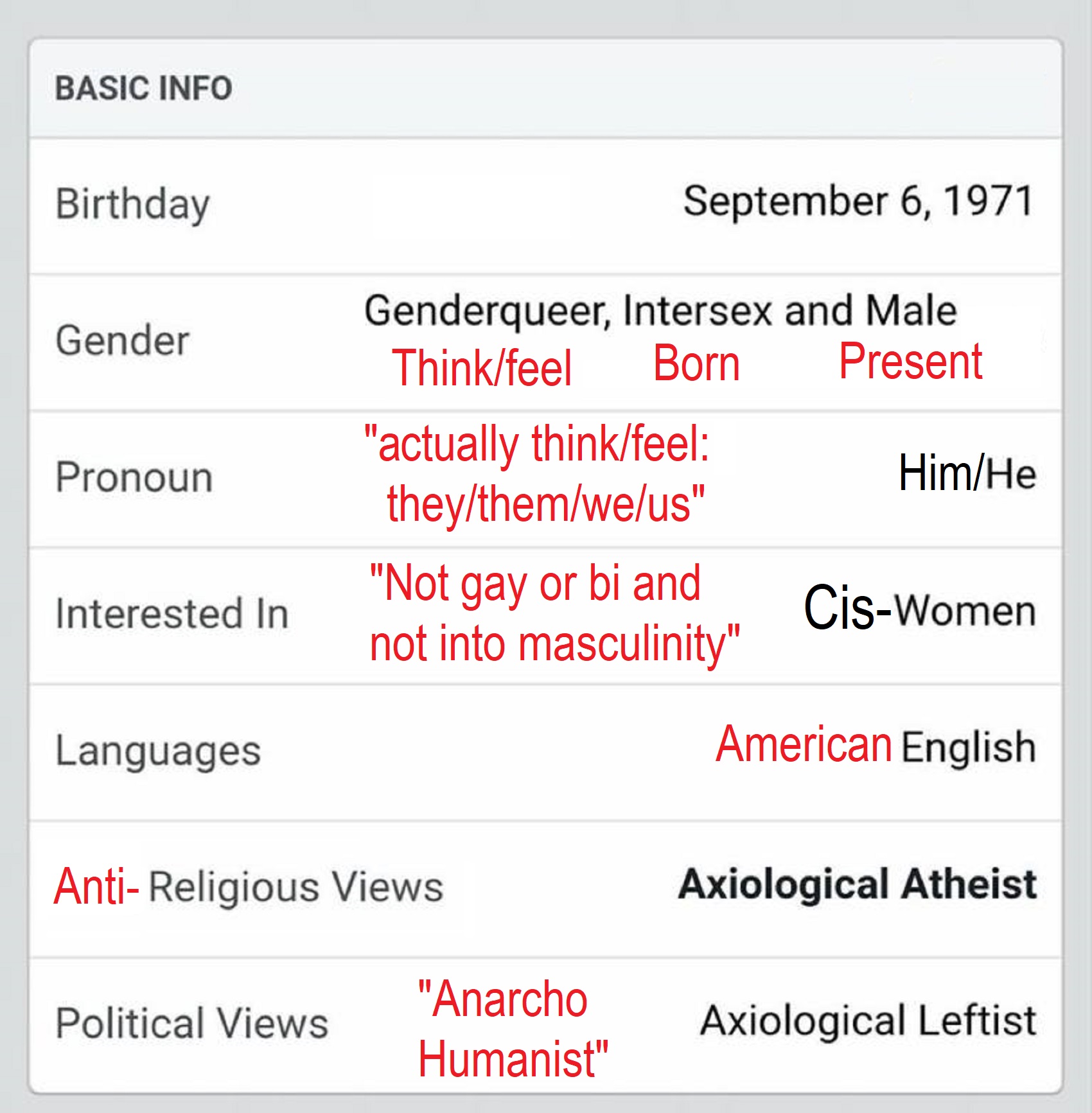
Here is why my name is: “Damien Marie AtHope”
I legally changed my first before I was an atheist. Then I legally changed my middle, and last name after I was an atheist.
I chose the first name “Damien” because it means one who tames, protects, or subdues. Also, I have family from Hawaii and there was a priest Damien who had originally had the first name jozef translated in English as Joseph but changed it just like me. Father Damien or Saint Damien of Molokai (1840 – 1889), defied the Catholic church and spent his life caring for the ones people stopped caring for as they were doomed to die, he never stopped seeing them as people of value and I too wish to never stop seeing the value in people or of human life. Although I am not saying he was a saint he still pushed religion and I do realize we should always question believed historic accounts of people like Damien as they can involve biases of Europeans and Americans (religion bias, ethnocentrism, racism, and colonialism, and imperialism), as such is “greatness” may be inflated as well as discount the real experiences or roles of the native residents on Molokaʻi. However, Mahatma Gandhi, the important political leader of India, said that Father Damien’s work had inspired his own social campaigns in India, and Father Damien Day is celebrated statewide in Hawaii on April 15.
I chose “Marie” to honor my gender diversity, is that I am mildly intersexed and genderqueer in my mental gender persuasion and I outwardly present as male. This gender difference is not to be confused as in my sexuality I am heterosexual or with my gender actually termed gynosexual meaning I am only sexually into women (cis women) and thus not bisexual or gay. Another reason I chose Marie is my wife’s middle name is Marie so we are even more connected by our middle names.
I chose “AtHope” to mean “At” “Hope” a state of being I live in and I wish for others. Another reason I chose AtHope is I didn’t want my wife to have to give up her last name just to take my original last name as is traditional as we are not traditional. so instead we came up with AtHope as a last name put together, to honor our shared equal status union.
I think the secret of who I am is I am still becoming who I am, which is the ever-thoughtful and caring humanistic me.
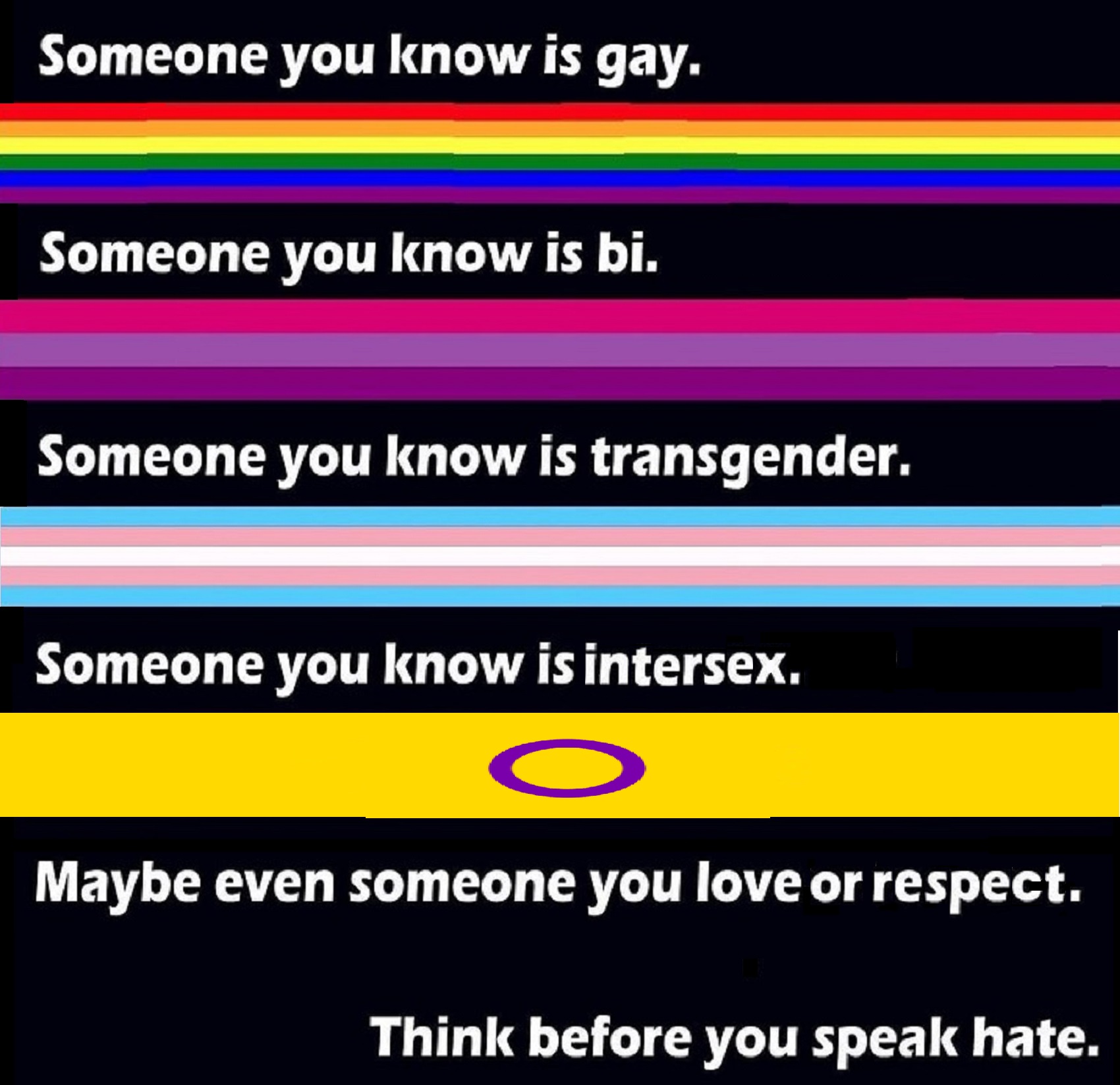

Male-Homosexual (female-like) / Trans-woman (female) Seated Figurine from Gobekli Tepe
I suspect hole #1 (top figure) which is directly under the area that would represent an anus and below an obvious erect phallus as well as being in a common position for female sitting figures implies a female-like nature to me. I surmise this gay male/transwoman (female natured/third gender/two-spirited) is thus fertility cult connected and likely expresses a homosexual male/transgender characteristic placing it “for me” in the sitting “Venus Phenomena” as its female counterparts with such features demand. Which I think involved early paganistic traits.
8,000-6,000 years ago Fragmentary Seated Gay Male / Trans-Woman / Intersex Figure with Missing Head
The bottom seared figure dated to Greek (Neolithic) 8,000-6,000 years ago, which I surmise could represent a gay male/transwoman is thus fertility cult connected and likely expresses a homosexual/transgender characteristic placing it in the sitting “Venus Phenomena” as its female counterparts. With the seeming open rectum, if it was allowed to sit naturally as created would look even more suggestive like the similar one from Gobekli Tepe 9,600-8,000 years ago in southeastern Turkey/Anatolia I surmise could also likely expresses a homosexual/transgender characteristic and both seem to have something that was on their backs. And as the one we are sure of is a young cat/bear crawling on his back similar animal companions is the female sitting figure has on her front 8,000-7,500 years ago from Hacilar in southwestern Turkey.
“The unclear find circumstances and the unusual material raise the question of the figurine´s provenance. The sinter layer is a characteristic for finds from Göbekli Tepe (and clearly indicates that the figurine was originally buried with the right side down), but could have formed of course also at another site with similar natural conditions. There is however an older find that could represent a fragment of the same figurine type. This fragment, of unknown gender, comprising the head and shoulder of a small figurine made from brownish limestone, was also discovered on the surface of the tell. There are two more examples of larger seated sculptures from Göbekli Tepe. The first depiction of a seated person seen above in the picture, though badly preserved, was found on the surface of the tell, too. Here, the hands are brought together under the belly the lower part of the sculpture is missing.” ref
“A snake could be depicted crawling up the back and head of the sculpture, but this remains uncertain, too. Another example was found deep in the northwestern depression of the tell. The find context is still under evaluation, much speaks for a PPN B date so far. The preservation of this sculpture is also rather bad, the lower part is missing again. Both examples show some clear differences compared to the male (transwoman) figurine: the arms are folded in front of the body, there is no animal on the shoulder, and the persons seem to sit on the ground, not on some object. Summing up, it seems nevertheless reasonably sure that the new figurine is from Göbekli Tepe – and represents a type, or variant, not known so far.” ref
“29 similarly seated limestone figurines are known from Mezraa-Teleilat´s phase IIIB, i.e. the Late PPN B / early Pottery Neolithic transition. One more find can be added to this group, a more recently published stone figurine from Çatalhöyük. Although the overall form is very similar, the (presumed female) figurines from Mezraa-Teleilat and Çatalhöyük are much more abstracted, or outright women as the former are sitting on armchair-like seats, wear robe-like clothes and in some cases belts, and examples with animals on the shoulders seem to be missing. As the latest finds from Göbekli Tepe date to the middle PPN B, the figurine must be older than the finds from Mezraa Teleilat and Çatalhöyük. Whether the naturalistic sculpture(s) from Göbekli Tepe can be regarded as the prototypes for this group and thus also a similar meaning could be proposed.” ref
The Venus of Hohle Fels (ancestor archetype totem?) dates back at least 35,000 years to the Aurignacian cultural period of Europe (43,000 to 26,000 years ago) and the start of woman as a totem. That Aurignacian culture (Animist-Totemist) was succeeded around 33,000 years ago by Gravettian culture of Europe (Animist-Totemist-Shamanist) at around 31,000 years ago with their first Venus figurine. However, most so-called Venus figurines date from the Gravettian cultural period dating between 26,000 –21,000 years ago. This cultural period too, was overtaken by the Magdalenian cultural period of Europe (Animist-Totemist-Shamanist)(17,000 to 12,000 years ago) (archetype “femaleness” spirit protector?) ending their last Female statuette the Venus of Monruz which may date back about 11,000 years ago. ref
- “The term “inconspicuous penis” could be a short penile shaft, that is, micropenis, or more commonly due to abnormalities of the investing structures. The latter group is further divided as buried penis, webbed penis, and trapped penis.” ref
- “The term “micropenis” is most often used medically when the rest of the penis, scrotum, and perineum are without ambiguity, such as hypospadias. Of the abnormal conditions associated with micropenis, most are conditions of reduced prenatal androgen production or effect, such as abnormal testicular development (testicular dysgenesis), Klinefelter syndrome, Leydig cell hypoplasia, specific defects of testosterone or dihydrotestosterone synthesis (17,20-lyase deficiency, 5α-reductase deficiency), androgen insensitivity syndromes, inadequate pituitary stimulation (gonadotropin deficiency), and other forms of congenital hypogonadism. Micropenis can also occur as part of many genetic malformation syndromes that do not involve the sex chromosomes.” ref
- “The term “Intersex” involves “Intersex people” who are individuals born with any of several sex characteristics including chromosome patterns, gonads, or genitals that, according to the Office of the United Nations High Commissioner for Human Rights, “do not fit typical binary notions of male or female bodies”. Though the range of atypical sex characteristics may be obvious from birth through the presence of physically ambiguous genitalia, in other instances, atypical characteristics may go unnoticed, presenting as ambiguous internal reproductive organs or atypical chromosomes that may remain unknown to an individual all of their life. The number of births with ambiguous genitals is in the range of 0.02% to 0.05%. Other conditions involve atypical chromosomes, gonads, or hormones. Some persons may be assigned and raised as a girl or boy but then identify with another gender later in life, while most continue to identify with their assigned sex. The number of births where the baby is intersex has been reported differently depending on who reports and which definition of intersex is used.” ref
“Intersex people are individuals born with any of several variations in sex characteristics including chromosomes, gonads, sex hormones or genitals that, according to the Office of the United Nations High Commissioner for Human Rights, “do not fit the typical definitions for male or female bodies”. Though the range of atypical sex characteristics may be obvious from birth through the presence of physically ambiguous genitalia, in other instances, these atypical characteristics may go unnoticed, presenting as ambiguous internal reproductive organs or atypical chromosomes that may remain unknown to an individual all of their life.” ref
“Sex assignment at birth usually aligns with a child’s anatomical sex and phenotype. The number of births where the baby is intersex has been reported to be as low as 0.018% or as high as roughly 1.7%, depending on which conditions are counted as intersex. The number of births with ambiguous genitals is in the range of 0.02% to 0.05%. Other intersex conditions involve atypical chromosomes, gonads, or hormones. Some intersex persons may be assigned and raised as a girl or boy but then identify with another gender later in life, while most continue to identify with their assigned sex.” ref
“The words used to describe intersex people are contested, and change over time and place. Intersex people were previously referred to as “hermaphrodites” or “congenital eunuchs“. In the 19th and 20th centuries, some medical experts devised new nomenclature in an attempt to classify the characteristics that they had observed, the first attempt to create a taxonomic classification system of intersex conditions. Intersex people were categorized as either having “true hermaphroditism“, “female pseudohermaphroditism“, or “male pseudohermaphroditism”. These terms are no longer used, and terms including the word “hermaphrodite” are considered to be misleading, stigmatizing, and scientifically specious in reference to humans. In biology, the term hermaphrodite is used to describe an organism that can produce both male and female gametes.” ref
“Some people with intersex traits use the term intersex, and some prefer other language. In clinical settings, the term “disorders of sex development” (DSD) has been used since 2006, a shift in language considered controversial since its introduction.” ref
“Intersex people face stigmatization and discrimination from birth, or following the discovery of intersex traits at stages of development such as puberty. Intersex people may face infanticide, abandonment, and the stigmatization of their families. Globally, some intersex infants and children, such as those with ambiguous outer genitalia, are surgically or hormonally altered to create more socially acceptable sex characteristics. However, this is considered controversial, with no firm evidence of favorable outcomes. Such treatments may involve sterilization. Adults, including elite female athletes, have also been subjects of such treatment. Increasingly, these issues are considered human rights abuses, with statements from international and national human rights and ethics institutions (see intersex human rights). Intersex organizations have also issued statements about human rights violations, including the 2013 Malta declaration of the third International Intersex Forum. In 2011, Christiane Völling became the first intersex person known to have successfully sued for damages in a case brought for non-consensual surgical intervention. In April 2015, Malta became the first country to outlaw non-consensual medical interventions to modify sex anatomy, including that of intersex people.” ref
Attitudes towards the term
“Some intersex organizations reference “intersex people” and “intersex variations or traits” while others use more medicalized language such as “people with intersex conditions”, or people “with intersex conditions or DSDs (differences of sex development)” and “children born with variations of sex anatomy”. In May 2016, interACT published a statement recognizing “increasing general understanding and acceptance of the term ‘intersex’”.” ref
“Australian sociological research on 272 “people born with atypical sex characteristics”, published in 2016, found that 60% of respondents used the term “intersex” to self-describe their sex characteristics, including people identifying themselves as intersex, describing themselves as having an intersex variation or, in smaller numbers, having an intersex condition.” ref
“Research on 202 respondents by the Lurie Children’s Hospital, Chicago, and the AIS-DSD Support Group (now known as InterConnect Support Group) published in 2017 found that 80% of Support Group respondents “strongly liked, liked or felt neutral about intersex” as a term, while caregivers were less supportive. The hospital reported that “disorders of sex development” may negatively affect care.” ref
“Another study by a group of children’s hospitals in the United States found that 53% of 133 parent and adolescent participants recruited at five clinics did not like the term intersex. Participants who were members of support groups were more likely to dislike the term. A “dsd-LIFE” study in 2020 found that around 43% of 179 participants thought the term “intersex” was bad, 20% felt neutral about the term, while the rest thought the term was good.” ref
The term ‘hermaphrodite’
“Historically, the term hermaphrodite was used in law to refer to people whose sex was in doubt. The 12th-century Decretum Gratiani states that “Whether an hermaphrodite may witness a testament, depends on which sex prevails” (“Hermafroditus an ad testamentum adhiberi possit, qualitas sexus incalescentis ostendit.”). Similarly, the 17th-century English jurist and judge Edward Coke (Lord Coke), wrote in his Institutes of the Lawes of England on laws of succession stating, “Every heire is either a male, a female, or an hermaphrodite, that is both male and female. And an hermaphrodite (which is also called Androgynus) shall be heire, either as male or female, according to that kind of sexe which doth prevaile.” ref
“During the Victorian era, medical authors attempted to ascertain whether or not humans could be hermaphrodites, adopting a precise biological definition for the term, and making distinctions between “male pseudohermaphrodite”, “female pseudohermaphrodite” and especially “true hermaphrodite“. These terms, which reflected histology (microscopic appearance) of the gonads, are no longer used. Until the mid-20th century, “hermaphrodite” was used synonymously with “intersex”. Medical terminology shifted in the early 21st century, not only due to concerns about language, but also a shift to understandings based on genetics.” ref
“Currently, in biology, a hermaphrodite is defined as an organism that has the ability to produce both male and female gametes. Although hermaphroditism occurs in some animal species, humans cannot be hermaphrodites in the precise biological sense. The Intersex Society of North America has stated that hermaphrodites should not be confused with intersex people, and that using “hermaphrodite” to refer to intersex individuals is considered to be stigmatizing and misleading.” ref
Disorders of sex development
Main article: Disorders of sex development
“Disorders of sex development” (DSD) is a contested term, defined to include congenital conditions in which development of chromosomal, gonadal, or anatomical sex is atypical. Members of the Lawson Wilkins Pediatric Endocrine Society and the European Society for Paediatric Endocrinology adopted this term in their “Consensus statement on management of intersex disorders”. While it adopted the term, to open “many more doors”, the now defunct Intersex Society of North America itself remarked that intersex is not a disorder. Other intersex people, activists, supporters, and academics have contested the adoption of the terminology and its implied status as a “disorder”, seeing this as offensive to intersex individuals who do not feel that there is something wrong with them, regard the DSD consensus paper as reinforcing the normativity of early surgical interventions, and criticize the treatment protocols associated with the new taxonomy.” ref
“Sociological research in Australia on 272 “people born with atypical sex characteristics,” published in 2016, found that 3% of respondents used the term “disorders of sex development” or “DSD” to define their sex characteristics, while 21% use the term when accessing medical services. In contrast, 60% used the term “intersex” in some form to self-describe their sex characteristics. U.S. research by the Lurie Children’s Hospital, Chicago, and the AIS-DSD Support Group (now InterConnect Support Group) published in 2017 found that “disorders of sex development” terminology may negatively affect care, give offense, and result in lower attendance at medical clinics.” ref
“Alternatives to categorizing intersex conditions as “disorders” have been suggested, including “variations of sex development”. Tony Briffa at Intersex Human Rights Australia questions a disease/disability approach, argues for deferral of intervention unless medically necessary, when fully informed consent of the individual involved is possible, and self-determination of sex/gender orientation and identity. In May 2016, interACT also published a statement opposing pathologizing language to describe people born with intersex traits, recognizing “increasing general understanding and acceptance of the term ‘intersex’”.” ref
“In May 2019, more than 50 intersex-led organizations signed a multilingual joint statement condemning the introduction of “disorders of sex development” language into the International Classification of Diseases, stating that this causes “harm” and facilitates human rights violations, calling on the World Health Organization to publish clear policy to ensure that intersex medical interventions are “fully compatible with human rights norms”.” ref
Endosex
Main article: Endosex
“Endosex is an antonym to the term intersex, first coined by Heike Bödeker in 1999. According to the National Academies of Sciences, Engineering, and Medicine, “some advocates and providers are increasingly using the term”.” ref
Prevalence
“Estimates of the number of people who are intersex vary, depending on which conditions are counted as intersex.” ref
The now-defunct Intersex Society of North America stated that:
“If you ask experts at medical centers how often a child is born so noticeably atypical in terms of genitalia that a specialist in sex differentiation is called in, the number comes out to about 1 in 1500 to 1 in 2000 births [0.07–0.05%]. But a lot more people than that are born with subtler forms of sex anatomy variations, some of which won’t show up until later in life.” ref
“Anne Fausto-Sterling and her co-authors said in two articles in 2000 that 1.7 percent of human births (1 in 60) might be intersex, including variations that may not become apparent until, for example, puberty, or until attempting to conceive. Their publications have been widely quoted by intersex activists.” ref
“Of the 1.7%, 1.5 percentage points (88% of those considered intersex in this figure) consist of individuals with late onset congenital adrenal hyperplasia (LOCAH). In response to Fausto-Sterling, Leonard Sax estimated that the prevalence of intersex was about 0.018% of the world’s population. A 2018 review reported that the number of births with ambiguous genitals is in the range of 0.02% to 0.05%. Sax stated that “[f]rom a clinician’s perspective, however, LOCAH is not an intersex condition.” He also states that Klinefelter syndrome (47,XXY), Turner syndrome (45,X), the chromosomal variants of 47,XYY and 47,XXX, and vaginal agenesis are not intersex conditions. The impact of milder ‘non classic’ CAH varies across individuals, may be asymptomatic in some cases or a cause of infertility, and has not been extensively studied.” ref
“The figure of 1.7% is still maintained by Intersex Human Rights Australia “despite its flaws”, stating both that the estimate “encapsulates the entire population of people who are stigmatized – or risk stigmatization – due to innate sex characteristics,” and that Sax’s definitions exclude individuals who experience such stigma and who have helped to establish the intersex movement.” ref
The following summarizes prevalences of traits that have been called intersex:
Prevalences of various conditions that have been called intersex
I will comment on me being intersex and then gender diversity.
Let me give you more background on me if you are interested in understanding me more.
I am mentally genderqueer (mental thinking is kind of like both male and female) and mildly intersex meaning I have biological and physical differences.
Few of the obvious physical ones are I have female size nipples, hidden penis, and a non closed internal pelvic opening. At birth, the underside of my penis had a small opening like a pseudo vagina which was surgically closed at birth. Therefore I had “severe hypospadias” of my penis.
“severe hypospadias a very mild form of intersex (under-virilization of a genetic male). Hypospadias is the most common anomaly of the penis affecting approximately one in 250 males born.” http://musom.marshall.edu/graphicdesign/ibooks/Reproductive%20Normal.html#prettyPhoto[pp_gal]/34/
Biologically, I had my testosterone checked and it is so low that it is less than some women. Mentally and emotionally, I am often more attracted to feminine things such as watching a play than playing sports, being creative than working on a car. I enjoy cooking, shopping, clothes styalist, decorating, getting manicure and pedicures, painting my nails, I have tattooed eyeliner as well, and when around a group of women I often forget I am male. I have always felt offended when women are put down and not valued since it feels like it is against me.
Even in one of my counseling courses in a brick school for my bachelors, the class was 20 students and I did not realize I was the only male until the professor asked me how does it feel to be the only male in class? I actually had to look around since I did not believe I was the only male since I felt so comfortable. But one can’t prove to others how they feel or should they have to. I don’t believe everyone who is genderqueer has to have proof of gender diversity.
However, I will say with an honest heart that I have felt both male and female my whole life. To simply call myself only a man seems to deny something inside. I use to be ashamed that I had two spirits but after realizing how relatively common it is I am now ok and realize that I am not that strange. I am not the only one.
According Rathus, Nevid, & Fichner-Rathus (2008), everyone starts out basically as a female and it takes three processes to make a male. First are defeminizing androgens, then masculinizing androgens, and then testosterone.
Actually, genetics differences are quite common: one in every 1500 males and one in every 5000 females has a genetic gender difference which is more than people with red hair in the world. That is 3 times more men than women so I am in good company.
So where I stand is I am a genderqueer intersex man but am heterosexual not gay or bi, You could say I am a gynesexual which means one born only attracted sexually to women (for me only Cis women) and usually who are also feminine expressing.
Because gynesexual means one born only attracted to women this would mean it could be applied to several different genders from straight men, to someone intersex even lesbian women.
Why add gynesexual? Because just telling you “I’m heterosexual” does not truly answer the question. Especially since “hetero” means different and there are different sexes than just male and female that have been documented (yes all the intersexes). So which sex different from your own are you attracted to from a intersex person could be not rightly explained with saying “I’m heterosexual”.
It is better to use a word that directly states “I’m attracted to women”. Not only does “Gynesexual” do this but it also shows that straight men and lesbians are the same…which is part of the problem with people treating gays with such bigotry. They don’t realize they have relatively the same sexual orientation as them.
By Damien Marie AtHope
Personhood Explored: https://damienmarieathope.com/2015/07/14/personhood-explored/
Gendered Thinking: https://damienmarieathope.com/2015/07/15/gendered-thinking/
Gynesexual/Gynephilic: attracted to females, women, and/or femininity – See more at: http://itspronouncedmetrosexual.com/2012/02/sexual-orientation-for-the-genderqueer/#sthash.Z2keUwNA.dpuf
Reference
Rathus, S.A., Nevid, J.S., & Fichner-Rathus, L. (2008). Human sexuality: In a world of diversity (7th ed.). Boston, MA: Pearson Education, Inc
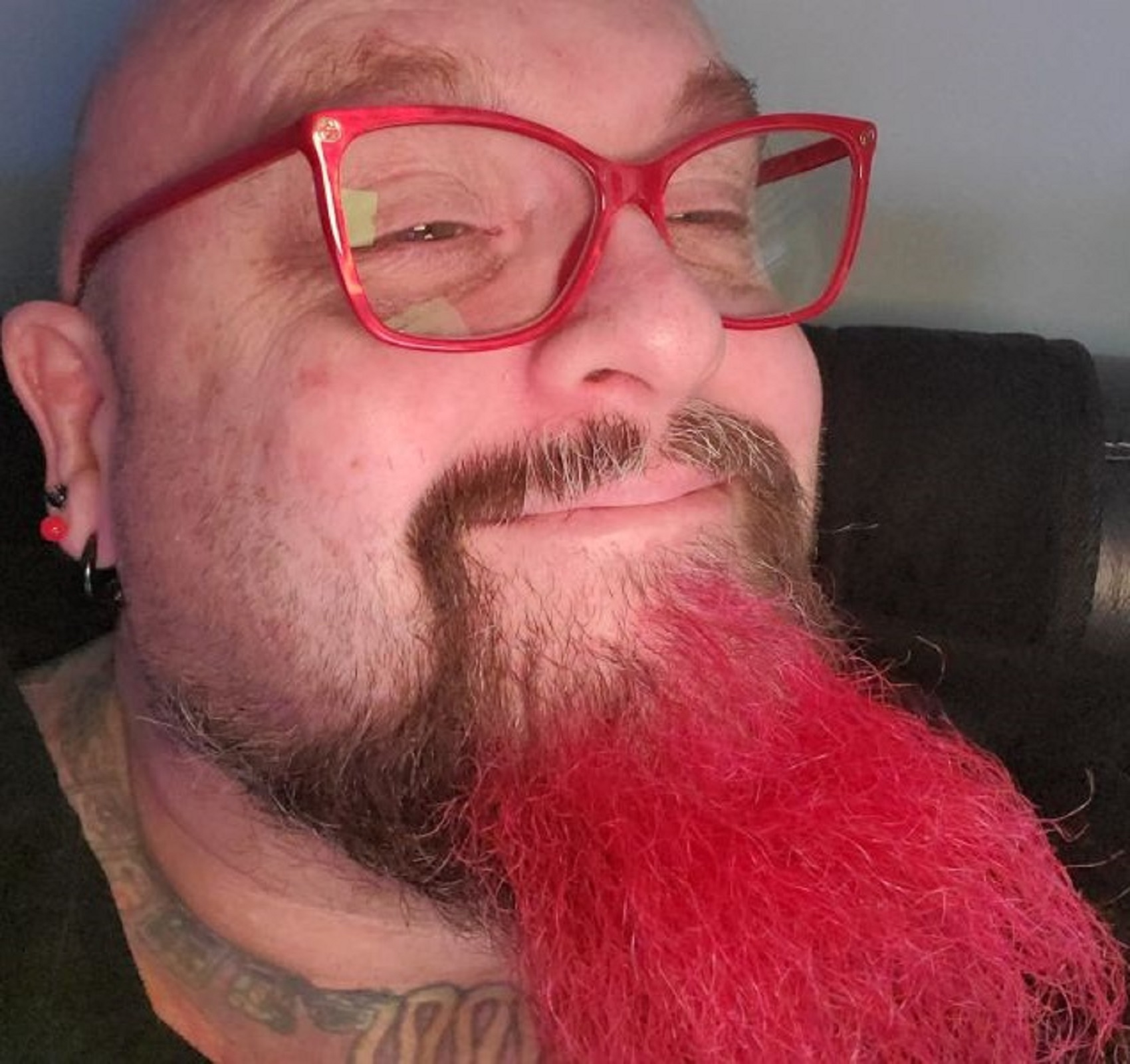
LGBT and LGBTI
Main article: Intersex and LGBT
“Intersex conditions can be contrasted with transgender gender identities and the attached gender dysphoria a transgender person may feel, wherein their gender identity does not match their assigned sex. However, some people are both intersex and transgender; though intersex people by definition have variable sex characteristics that do not align with either typically male or female, this may be considered separate to an individual’s assigned gender, the way they are raised and perceived, and their internal gender identity. A 2012 clinical review paper found that between 8.5% and 20% of people with intersex variations experienced gender dysphoria. In an analysis of the use of preimplantation genetic diagnosis to eliminate intersex traits, Behrmann and Ravitsky state: “Parental choice against intersex may … conceal biases against same-sex attractedness and gender nonconformity.” ref
“The relationship of intersex people and communities to LGBTQ communities is complex, but intersex people are often added to the LGBT acronym, resulting in the acronym LGBTI. Emi Koyama describes how the inclusion of intersex in LGBTI can fail to address intersex-specific human rights issues, including creating false impressions “that intersex people’s rights are protected” by laws protecting LGBT people, and failing to acknowledge that many intersex people are not LGBT. Organisation Intersex International Australia states that some intersex individuals are homosexual, and some are heterosexual, but “LGBTI activism has fought for the rights of people who fall outside of expected binary sex and gender norms.” Julius Kaggwa of SIPD Uganda has written that, while the gay community “offers us a place of relative safety, it is also oblivious to our specific needs”. Mauro Cabral has written that transgender people and organizations “need to stop approaching intersex issues as if they were trans issues”, including use of intersex conditions and people as a means of explaining being transgender; “we can collaborate a lot with the intersex movement by making it clear how wrong that approach is”.” ref
In society
“An intersex character is the narrator in Jeffrey Eugenides‘ Pulitzer Prize-winning novel Middlesex. The memoir, Born Both: An Intersex Life (Hachette Books, 2017), by intersex author and activist Hida Viloria, received strong praise from The New York Times Book Review, The Washington Post, Rolling Stone, People Magazine, and Psychology Today, was one of School Library Journal‘s 2017 Top Ten Adult Books for Teens, and was a 2018 Lambda Literary Award nominee.” ref
“Television works about intersex and films about intersex are scarce. The Spanish-language film XXY won the Critics’ Week grand prize at the 2007 Cannes Film Festival and the ACID/CCAS Support Award. Faking It is notable for providing both the first intersex main character in a television show, and television’s first intersex character played by an intersex actor.” ref
Civil society institutions
Main article: Intersex civil society organizations
“Intersex peer support and advocacy organizations have existed since at least 1985, with the establishment of the Androgen Insensitivity Syndrome Support Group Australia in 1985. The Androgen Insensitivity Syndrome Support Group (UK) was established in 1988. The Intersex Society of North America (ISNA) may have been one of the first intersex civil society organizations to have been open to people regardless of diagnosis; it was active from 1993 to 2008.” ref
Events
Main articles: Intersex Awareness Day and Intersex Day of Remembrance
“Intersex Awareness Day is an internationally observed civil awareness day designed to highlight the challenges faced by intersex people, occurring annually on 26 October. It marks the first public demonstration by intersex people, which took place in Boston on 26 October 1996, outside a venue where the American Academy of Pediatrics was holding its annual conference.” ref
“Intersex Day of Remembrance, also known as Intersex Solidarity Day, is an internationally observed civil awareness day designed to highlight issues faced by intersex people, occurring annually on 8 November. It marks the birthday of Herculine Barbin, a French intersex person whose memoirs were later published by Michel Foucault in Herculine Barbin: Being the Recently Discovered Memoirs of a Nineteenth-century French Hermaphrodite.” ref
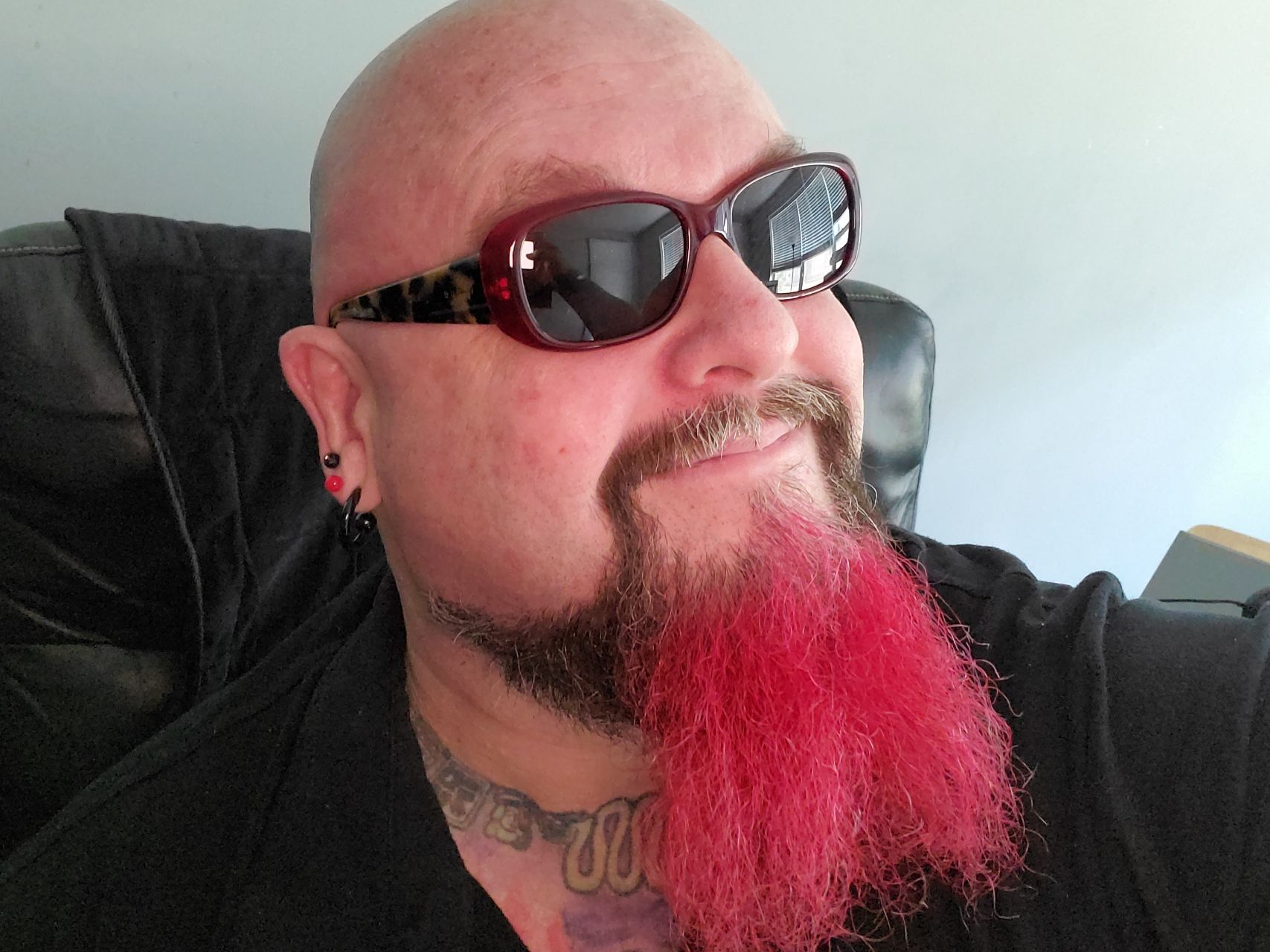
Religion
Main article: Intersex people and religion
“In Judaism, the Talmud contains extensive discussion concerning the status of two types of intersex people in Jewish law; namely, the androgynous, who exhibit both male and female external sexual organs, and the tumtum, who exhibit neither. In the 1970s and 1980s, the treatment of intersex babies started to be discussed in Orthodox Jewish medical halacha by prominent rabbinic leaders, such as Eliezer Waldenberg and Moshe Feinstein.” ref
Sport
Main article: Sex verification in sports
“Erik Schinegger, Foekje Dillema, Maria José Martínez-Patiño, and Santhi Soundarajan were subject to adverse sex verification testing resulting in ineligibility to compete in organized competitive competition. Stanisława Walasiewicz was posthumously ruled ineligible to have competed. The South African middle-distance runner Caster Semenya won gold at the World Championships in the women’s 800 meters and won silver in the 2012 Summer Olympics. When Semenya won gold in the World Championships, the International Association of Athletics Federations (IAAF) requested sex verification tests. The results were not released. Semenya was ruled eligible to compete.” ref
“Katrina Karkazis, Rebecca Jordan-Young, Georgiann Davis, and Silvia Camporesi have claimed that IAAF policies on “hyperandrogenism” in female athletes are “significantly flawed”, arguing that the policy does not protect against breaches of privacy, requires athletes to undergo unnecessary treatment in order to compete, and intensifies “gender policing”, and recommended that athletes be able to compete in accordance with their legally-recognised gender.” ref
“In April 2014, the BMJ reported that four elite women athletes with XY chromosomes and 5-ARD were subjected to sterilization and “partial clitoridectomies” in order to compete in sport. The authors noted that partial clitoridectomy was “not medically indicated” and “does not relate to real or perceived athletic ‘advantage’.” Intersex advocates regarded this intervention as “a clearly coercive process”. In 2016, the United Nations Special Rapporteur on health, Dainius Pūras, criticized “current and historic” sex verification policies, describing how “a number of athletes have undergone gonadectomy (removal of reproductive organs) and partial clitoridectomy (a form of female genital mutilation) in the absence of symptoms or health issues warranting those procedures.” ref
Medical
“Research in the late 20th century led to a growing medical consensus that diverse intersex bodies are normal, but relatively rare, forms of human biology. Clinician and researcher Milton Diamond stresses the importance of care in the selection of language related to intersex people:
Foremost, we advocate use of the terms “typical”, “usual”, or “most frequent” where it is more common to use the term “normal.” When possible avoid expressions like maldeveloped or undeveloped, errors of development, defective genitals, abnormal, or mistakes of nature. Emphasize that all of these conditions are biologically understandable while they are statistically uncommon.” ref
Medical classifications
Sexual differentiation
Main article: Sexual differentiation
“The common pathway of sexual differentiation, where a productive human female has an XX chromosome pair, and a productive male has an XY pair, is relevant to the development of intersex conditions. During fertilization, the sperm adds either an X (female) or a Y (male) chromosome to the X in the ovum. This determines the genetic sex of the embryo. During the first weeks of development, genetic male and female fetuses are “anatomically indistinguishable”, with primitive gonads beginning to develop during approximately the sixth week of gestation. The gonads, in a bipotential state, may develop into either testes (the male gonads) or ovaries (the female gonads), depending on the consequent events. Through the seventh week, genetically female and genetically male fetuses appear identical.” ref
“At around eight weeks of gestation, the gonads of an XY embryo differentiate into functional testes, secreting testosterone. Ovarian differentiation, for XX embryos, does not occur until approximately week 12 of gestation. In typical female differentiation, the Müllerian duct system develops into the uterus, Fallopian tubes, and inner third of the vagina. In males, the Müllerian duct-inhibiting hormone MIH causes this duct system to regress. Next, androgens cause the development of the Wolffian duct system, which develops into the vas deferens, seminal vesicles, and ejaculatory ducts. By birth, the typical fetus has been completely sexed male or female, meaning that the genetic sex (XY-male or XX-female) corresponds with the phenotypical sex; that is to say, genetic sex corresponds with internal and external gonads, and external appearance of the genitals.” ref
Signs
“There are a variety of symptoms that can occur. Ambiguous genitalia is the most common sign. There can be micropenis, clitoromegaly, partial labial fusion, electrolyte abnormalities, delayed or absent puberty, unexpected changes at puberty, hypospadias, labial or inguinal (groin) masses (which may turn out to be testes) in girls and undescended testes (which may turn out to be ovaries) in boys.” ref
Ambiguous genitalia
“Ambiguous genitalia may appear as a large clitoris or as a small penis.” ref
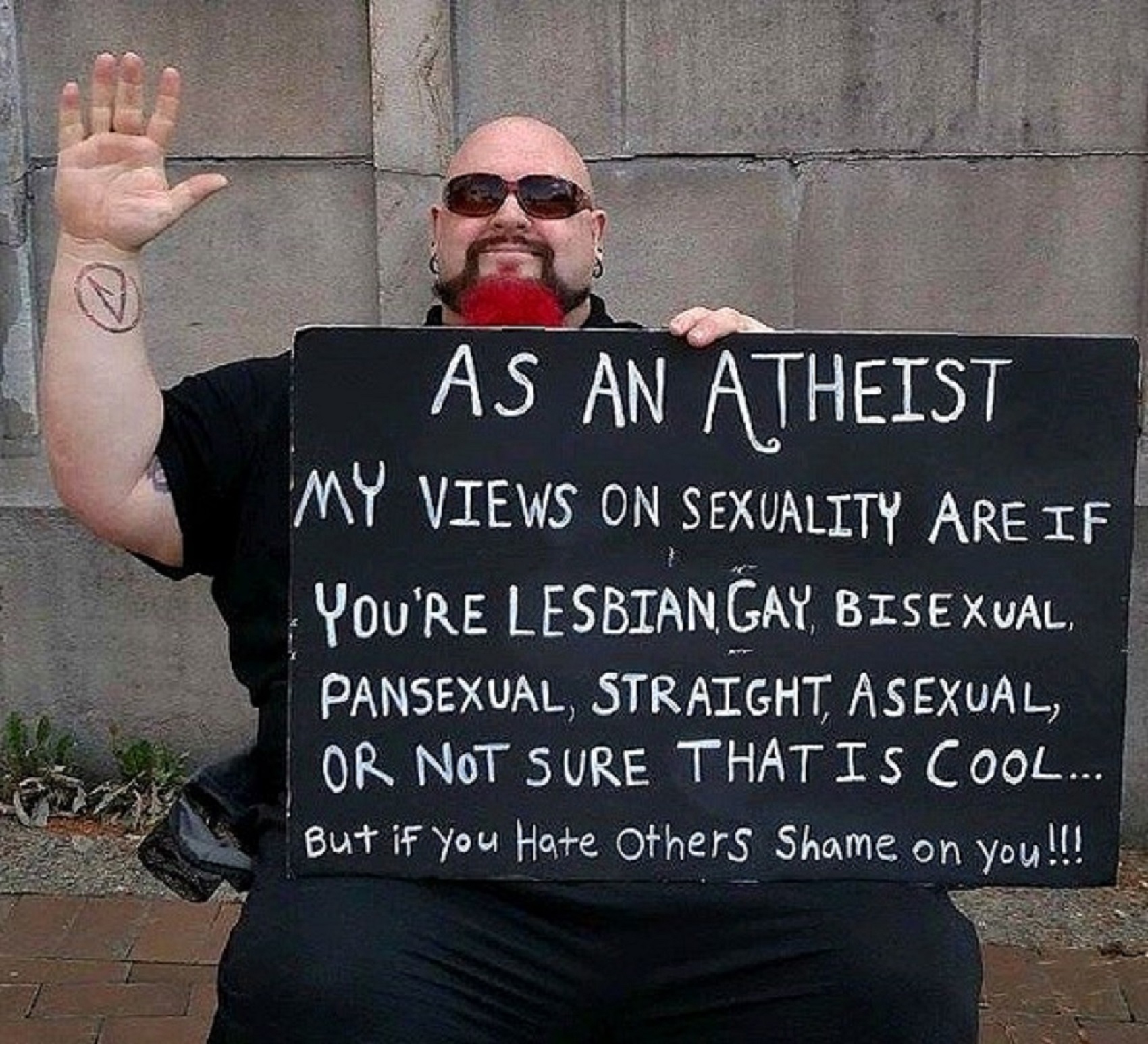
- Me and My Gender Diversity: Genderqueer, Intersex, and Male.
- Intersex human rights? No, not really!!!
- I am Pro-Body Sovereignty and Rights Against Genital Mutilation in Females, Males, as well as Intersex Persons.
- Very Supportive of all Genders and Sexualities
- Gender defender or abuser?
- Transgender Support Challenge
- Why is it Often Claimed that Gods have a Gender?
- Women were the focus of religion, from at least around 35,000 years ago, until 2,000 years ago?
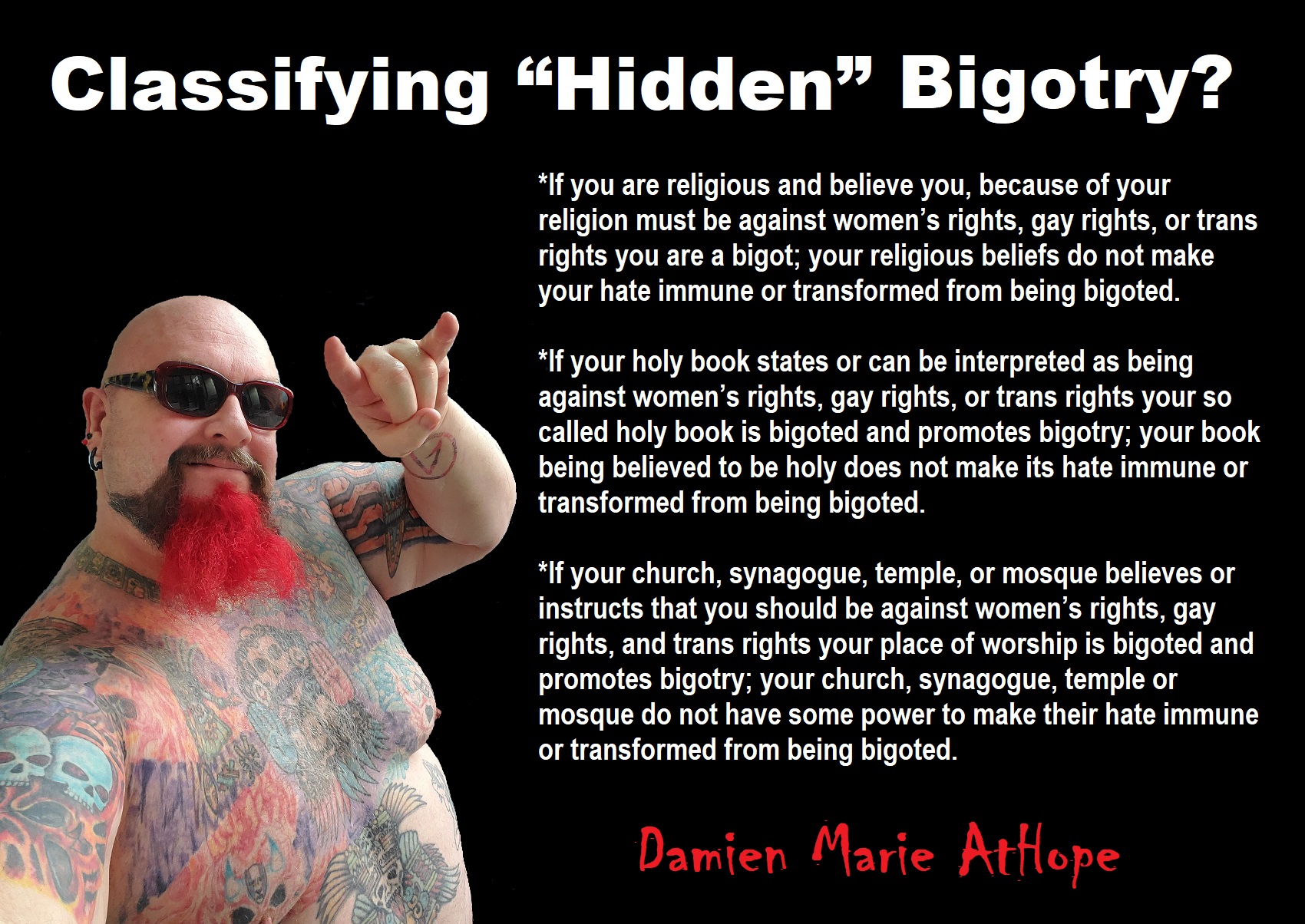





“Theists, there has to be a god, as something can not come from nothing.”
Well, thus something (unknown) happened and then there was something. This does not tell us what the something that may have been involved with something coming from nothing. A supposed first cause, thus something (unknown) happened and then there was something is not an open invitation to claim it as known, neither is it justified to call or label such an unknown as anything, especially an unsubstantiated magical thinking belief born of mythology and religious storytelling.


While hallucinogens are associated with shamanism, it is alcohol that is associated with paganism.
The Atheist-Humanist-Leftist Revolutionaries Shows in the prehistory series:
Show two: Pre-animism 300,000 years old and animism 100,000 years old: related to “Anarchism and Socialism”
Show tree: Totemism 50,000 years old: related to “Anarchism and Socialism”
Show four: Shamanism 30,000 years old: related to “Anarchism and Socialism”
Show five: Paganism 12,000 years old: related to “Anarchism and Socialism”
Show six: Emergence of hierarchy, sexism, slavery, and the new male god dominance: Paganism 7,000-5,000 years old: related to “Anarchism and Socialism” (Capitalism) (World War 0) Elite and their slaves!
Prehistory: related to “Anarchism and Socialism” the division of labor, power, rights, and recourses: VIDEO
Pre-animism 300,000 years old and animism 100,000 years old: related to “Anarchism and Socialism”: VIDEO
Totemism 50,000 years old: related to “Anarchism and Socialism”: VIDEO
Shamanism 30,000 years old: related to “Anarchism and Socialism”: VIDEO
Paganism 12,000 years old: related to “Anarchism and Socialism” (Pre-Capitalism): VIDEO
Paganism 7,000-5,000 years old: related to “Anarchism and Socialism” (Capitalism) (World War 0) Elite and their slaves: VIEDO
Paganism 5,000 years old: progressed organized religion and the state: related to “Anarchism and Socialism” (Kings and the Rise of the State): VIEDO
Paganism 4,000 years old: related to “Anarchism and Socialism” (First Moralistic gods, then the Origin time of Monotheism): VIEDO
I do not hate simply because I challenge and expose myths or lies any more than others being thought of as loving simply because of the protection and hiding from challenge their favored myths or lies.
The truth is best championed in the sunlight of challenge.
An archaeologist once said to me “Damien religion and culture are very different”
My response, So are you saying that was always that way, such as would you say Native Americans’ cultures are separate from their religions? And do you think it always was the way you believe?
I had said that religion was a cultural product. That is still how I see it and there are other archaeologists that think close to me as well. Gods too are the myths of cultures that did not understand science or the world around them, seeing magic/supernatural everywhere.
I personally think there is a goddess and not enough evidence to support a male god at Çatalhöyük but if there was both a male and female god and goddess then I know the kind of gods they were like Proto-Indo-European mythology.
This series idea was addressed in, Anarchist Teaching as Free Public Education or Free Education in the Public: VIDEO
Our 12 video series: Organized Oppression: Mesopotamian State Force and the Politics of power (9,000-4,000 years ago), is adapted from: The Complete and Concise History of the Sumerians and Early Bronze Age Mesopotamia (7000-2000 BC): https://www.youtube.com/watch?v=szFjxmY7jQA by “History with Cy“
Show #1: Mesopotamian State Force and the Politics of Power (Samarra, Halaf, Ubaid)
Show #2: Mesopotamian State Force and the Politics of Power
Show #3: Mesopotamian State Force and the Politics of Power (Uruk and the First Cities)
Show #4: Mesopotamian State Force and the Politics of Power (First Kings)
Show #5: Mesopotamian State Force and the Politics of Power (Early Dynastic Period)
Show #6: Mesopotamian State Force and the Politics of Power
Show #7: Mesopotamian State Force and the Politics of Power (Sargon and Akkadian Rule)
Show #9: Mesopotamian State Force and the Politics of Power (Gudea of Lagash and Utu-hegal)
Show #12: Mesopotamian State Force and the Politics of Power (Aftermath and Legacy of Sumer)

The “Atheist-Humanist-Leftist Revolutionaries”
Cory Johnston ☭ Ⓐ Atheist Leftist @Skepticallefty & I (Damien Marie AtHope) @AthopeMarie (my YouTube & related blog) are working jointly in atheist, antitheist, antireligionist, antifascist, anarchist, socialist, and humanist endeavors in our videos together, generally, every other Saturday.
Why Does Power Bring Responsibility?
Think, how often is it the powerless that start wars, oppress others, or commit genocide? So, I guess the question is to us all, to ask, how can power not carry responsibility in a humanity concept? I know I see the deep ethical responsibility that if there is power their must be a humanistic responsibility of ethical and empathic stewardship of that power. Will I be brave enough to be kind? Will I possess enough courage to be compassionate? Will my valor reach its height of empathy? I as everyone, earns our justified respect by our actions, that are good, ethical, just, protecting, and kind. Do I have enough self-respect to put my love for humanity’s flushing, over being brought down by some of its bad actors? May we all be the ones doing good actions in the world, to help human flourishing.
I create the world I want to live in, striving for flourishing. Which is not a place but a positive potential involvement and promotion; a life of humanist goal precision. To master oneself, also means mastering positive prosocial behaviors needed for human flourishing. I may have lost a god myth as an atheist, but I am happy to tell you, my friend, it is exactly because of that, leaving the mental terrorizer, god belief, that I truly regained my connected ethical as well as kind humanity.
Cory and I will talk about prehistory and theism, addressing the relevance to atheism, anarchism, and socialism.
At the same time as the rise of the male god, 7,000 years ago, there was also the very time there was the rise of violence, war, and clans to kingdoms, then empires, then states. It is all connected back to 7,000 years ago, and it moved across the world.
Cory Johnston: https://damienmarieathope.com/2021/04/cory-johnston-mind-of-a-skeptical-leftist/?v=32aec8db952d
The Mind of a Skeptical Leftist (YouTube)
Cory Johnston: Mind of a Skeptical Leftist @Skepticallefty
The Mind of a Skeptical Leftist By Cory Johnston: “Promoting critical thinking, social justice, and left-wing politics by covering current events and talking to a variety of people. Cory Johnston has been thoughtfully talking to people and attempting to promote critical thinking, social justice, and left-wing politics.” http://anchor.fm/skepticalleft
Cory needs our support. We rise by helping each other.
Cory Johnston ☭ Ⓐ @Skepticallefty Evidence-based atheist leftist (he/him) Producer, host, and co-host of 4 podcasts @skeptarchy @skpoliticspod and @AthopeMarie
Damien Marie AtHope (“At Hope”) Axiological Atheist, Anti-theist, Anti-religionist, Secular Humanist. Rationalist, Writer, Artist, Poet, Philosopher, Advocate, Activist, Psychology, and Armchair Archaeology/Anthropology/Historian.
Damien is interested in: Freedom, Liberty, Justice, Equality, Ethics, Humanism, Science, Atheism, Antiteism, Antireligionism, Ignosticism, Left-Libertarianism, Anarchism, Socialism, Mutualism, Axiology, Metaphysics, LGBTQI, Philosophy, Advocacy, Activism, Mental Health, Psychology, Archaeology, Social Work, Sexual Rights, Marriage Rights, Woman’s Rights, Gender Rights, Child Rights, Secular Rights, Race Equality, Ageism/Disability Equality, Etc. And a far-leftist, “Anarcho-Humanist.”
I am not a good fit in the atheist movement that is mostly pro-capitalist, I am anti-capitalist. Mostly pro-skeptic, I am a rationalist not valuing skepticism. Mostly pro-agnostic, I am anti-agnostic. Mostly limited to anti-Abrahamic religions, I am an anti-religionist.
To me, the “male god” seems to have either emerged or become prominent around 7,000 years ago, whereas the now favored monotheism “male god” is more like 4,000 years ago or so. To me, the “female goddess” seems to have either emerged or become prominent around 11,000-10,000 years ago or so, losing the majority of its once prominence around 2,000 years ago due largely to the now favored monotheism “male god” that grow in prominence after 4,000 years ago or so.
My Thought on the Evolution of Gods?
Animal protector deities from old totems/spirit animal beliefs come first to me, 13,000/12,000 years ago, then women as deities 11,000/10,000 years ago, then male gods around 7,000/8,000 years ago. Moralistic gods around 5,000/4,000 years ago, and monotheistic gods around 4,000/3,000 years ago.
To me, animal gods were likely first related to totemism animals around 13,000 to 12,000 years ago or older. Female as goddesses was next to me, 11,000 to 10,000 years ago or so with the emergence of agriculture. Then male gods come about 8,000 to 7,000 years ago with clan wars. Many monotheism-themed religions started in henotheism, emerging out of polytheism/paganism.


Damien Marie AtHope (Said as “At” “Hope”)/(Autodidact Polymath but not good at math):
Axiological Atheist, Anti-theist, Anti-religionist, Secular Humanist, Rationalist, Writer, Artist, Jeweler, Poet, “autodidact” Philosopher, schooled in Psychology, and “autodidact” Armchair Archaeology/Anthropology/Pre-Historian (Knowledgeable in the range of: 1 million to 5,000/4,000 years ago). I am an anarchist socialist politically. Reasons for or Types of Atheism
My Website, My Blog, & Short-writing or Quotes, My YouTube, Twitter: @AthopeMarie, and My Email: damien.marie.athope@gmail.com

